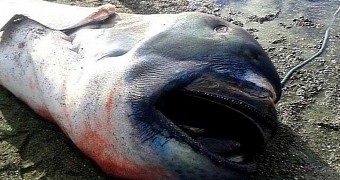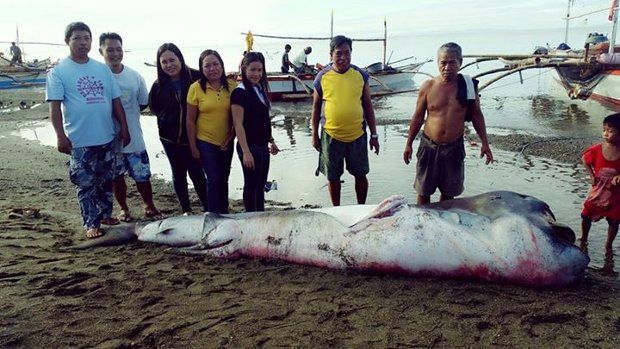Earlier this week, on January 27, fishermen in the port of Marington in Pio Duran, a municipality in the province of Albay in the Philippines, discovered the corpse of a rare male megamouth shark lying on the sand on a local beach.
The 5-meter-long (16 feet) marine creature, featured in the photos accompanying this article, appears to have died after suffering several severe wounds. How it was that the shark sustained these injuries remains a mystery.
Having had the chance to take a close look at the shark's corpse, wildlife experts say that, all things considered, it might be that the ocean dweller died after getting caught in a fishing net and injuring itself while trying to escape.
Megamouth sharks are elusive creatures, keep to themselves
Wildlife researchers say that megamouths are deepwater sharks, which means that they spend most of their life at considerable depths far out in global oceans. Hence, it is not all that often that they are captured or even spotted.
In fact, it was only in 1976 that the species, whose official name is Megachasma pelagios, was documented by science. This happened not because researchers chanced to come across a specimen in its natural habitat but because one such creature got caught in the sea anchor of a US ship.
IFL Science tells us that, since the species was discovered until now, just 63 megamouth sightings have been reported and confirmed on a global scale. Otherwise put, these scary-looking fellows very much like to keep to themselves.
The reason Megachasma pelagios specimens are commonly referred to as megamouth sharks is that their mouths are, well, ginormous. These freakishly big mouths of theirs sport about 50 teeth on each jaw and are surrounded by light-emitting organs dubbed photophores.
It is believed that the sharks rely on these rather peculiar organs to attract plankton or small fish, which constitute their prey. Interestingly enough, wildlife researchers say that megamouth sharks are sometimes attacked by sperm whales looking to grab a quick bite.
Most of males belonging to this species measure 4 meters (13 feet) from head to tail. Females, on the other hand, have an average body length of 5 meters (16 feet). Still, it can happen for a specimen belonging to this species to grow to measure as much as 5.5 meters (18 feet) in length.
The Philippines specimen will soon undergo a necropsy
Seeing how rare megamouth sharks are, it's no surprise that wildlife researchers cannot wait to closely examine the corpse of the specimen that washed ashore in the Philippines earlier this week. Thus, it is understood that the animal will soon undergo a necropsy.
Specialists are confident that, once they cut it open and have a better look at its injuries, they will be able to figure out exactly how and why it died. Besides, they say that, by autopsying this animal, they will surely gain a better understanding of this elusive species.

 14 DAY TRIAL //
14 DAY TRIAL // 

